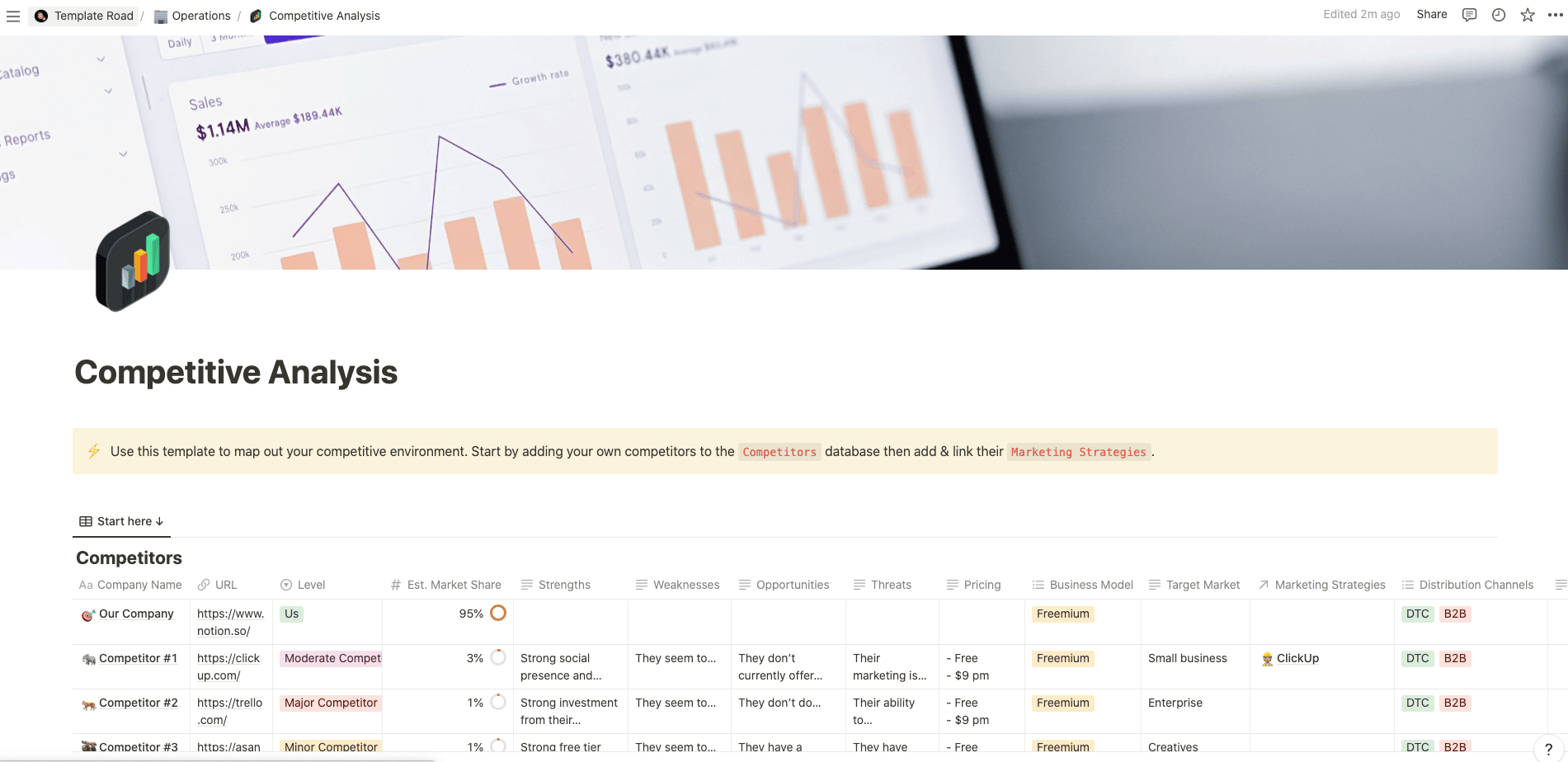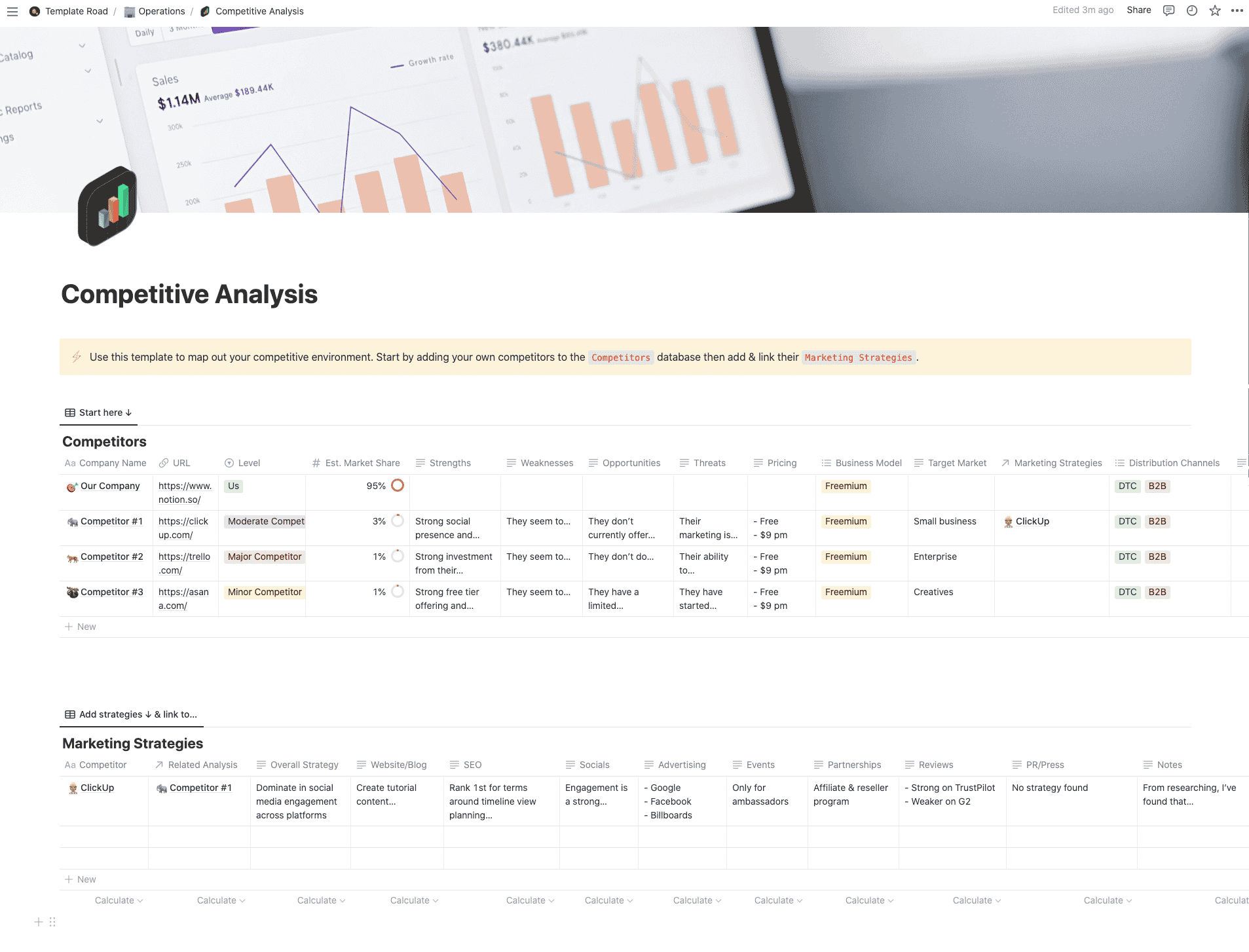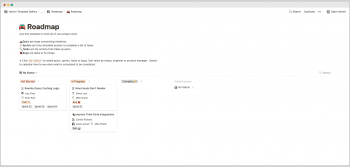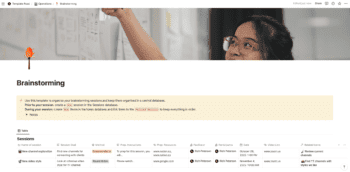This template helps you see if your competitors are doing things right so you can learn from them and improve your own business.
Buy on
Contents
- Notion – Competitive Analysis Template
- What is Competitive Analysis?
- What is competitive market research?
- How to do Competitive Analysis
- Product/Service Offering
- Target Customers
- Marketing Approach
- Distribution Channels
- How to determine your competitors’ market positioning
- Directly Competing Against Competitors
- Positioning Yourself As A Value Provider
- Positioning Yourself Between Two Or More Competitors
Notion – Competitive Analysis Template
You’re competing against companies who are trying to sell similar products to yours. This template helps you see if your competitors are doing things right so you can learn from them and improve your own business. What do they say about themselves? Who are their customers? What does their social media presence tell us about them? Are they offering any special promotions? Once you’ve answered these questions, you’ll know exactly where you stand compared to your competitors.
——————————————-
What you need before purchase
- Basic knowledge of how to use Notion
- Paid Notion account if you’re looking to add lots of content to your template / Notion account (sign up here). Not much content? You’re able to use their free account.
——————————————-
After purchase
After purchase, you’ll be able to view the template immediately. The template can be added to your Notion account by:
- Click on the template download link in Gumroad
- When viewing the Notion template, click on the “Duplicate” link in the top-right of your screen
- The template will now be available in your own Notion account
For ongoing use, the steps are:
- Login to Notion and select the template you want to view
- Click on the Duplicate link in the top-right of your screen to create a copy to use
- You’ll be able to retain the Notion template and work on the Duplicate (with a new name) and can repeat this process whenever you want to use the template again
What is Competitive Analysis?
Competitive analysis is the process of identifying and evaluating competitors in your industry or market area, as well as their strengths, weaknesses, opportunities, threats, and strategies. It can be used for any business that wants to understand its competition better, but it’s especially useful when you want to know how to compete against them.
If you have an idea for a new product or service, you need to first identify who else is already doing what you want to offer. This will help you determine if there are enough customers out there looking for what you’re offering, whether they would pay for it, and what kind of price you should charge.
If you’re trying to decide between two products or services, you’ll also want to compare their features, benefits, costs, and other factors. For example, if you’re deciding between two insurance companies, you might look at which one has lower rates, more customer support, and better coverage.
Once you’ve identified your competitors, you’ll then want to analyze each company individually. Here are some questions you may ask yourself:
- What are their strengths? Weaknesses? Opportunities? Threats? Strategies?
- How does this competitor make money?
- How big is their market share?
- What are their most important customers?
- Are they growing fast? Slow?
- Do they have good financial health? Bad?
- Is their management team stable?
- How much revenue do they generate per year?
- How many employees do they have?
- What are their sales channels?
- What are their marketing methods?
- What are their key differentiators?
- What are their biggest challenges?
- What are their major weaknesses?
- What are their growth prospects?
- What are their unique selling propositions (USPs)?
What is competitive market research?
Market Research is the process of gathering information about your target audience so that you can design a successful marketing strategy. Market research helps you figure out where your potential customers live, what they like, and what they don’t like. It also gives you insight into their buying habits, preferences, and needs. The goal of market research is to find out everything you can about your target audience so you can create a message that resonates with them. You can use market research to learn about your audience by asking them directly, surveying them, or observing them. There are several ways to gather data on your audience, including focus groups, interviews, surveys, observation, and even social media.
The best way to conduct market research depends on the type of information you want to collect. If you just want to get feedback from people, you can simply ask them directly. You could also survey them using online tools such as Google Forms. However, if you want to dig deeper into your audience’s opinions, you’ll need to conduct qualitative research. Qualitative research involves talking to people face-to-face, either through focus groups or individual interviews. In addition to getting direct feedback from your audience, you can also observe them in action. Observation allows you to see how they behave when interacting with your brand, and you can use this information to inform future decisions.
How to do Competitive Analysis
Competitive analysis is an essential part of any business plan. It lets you know who your competition is, how they operate, and what strategies they’re using to stay ahead of the curve. To perform a competitive analysis, start by identifying your competitors. This will help you understand what makes them tick, and it will give you insights into their strengths, weaknesses, opportunities, threats, and strategies.
Analyze competitors’ online presence. Look at websites, blogs, videos, and other digital content to gain a better understanding of your competitors.
Look for patterns. How do your competitors position themselves? Do they emphasize certain products over others? Are they more focused on one particular customer segment than another?
Use industry publications. Check out trade magazines, newspapers, and journals to identify trends and developments within your industry.
Gather competitor intelligence. Ask your current clients and former employees for tips on your competitors. They may be able to provide valuable information about your competitors.
Interview your competitors. Talk to your competitors’ salespeople, managers, and executives to learn more about their businesses.
Once you’ve identified your competitors, you should analyze each company based on its four key attributes:
- Product/service offering
- Target customers
- Marketing approach
- Distribution channels
Product/Service Offering
Your product or service offering defines what you offer to your customers. Your product or service offering includes all the things you sell to your customers. For example, if you run a restaurant, your product or service offering would include food items, beverages, table settings, and decorations.
Target Customers
Your target customers are the individuals or organizations that purchase your product or service. These customers have specific needs that you must meet in order to succeed.
Marketing Approach
Your marketing approach describes how you communicate with your target customers. Some companies rely heavily on advertising, while others prefer word-of-mouth referrals.
Distribution Channels
Your distribution channels describe where you distribute your product or service. You could sell your product or service directly to consumers, or you could work with retailers to market your product or service.
Identifying your competitors’ product or service offerings, target customers, and marketing approaches will help you determine which strategy works best for your business. Once you know what your competitors are doing, you can decide whether you want to follow suit or take a different route.
How to determine your competitors’ market positioning
Market positioning is the way your company positions itself relative to its competitors. Market positioning helps you define your place in the marketplace.
There are three main types of market positioning:
- Directly competing against your competitors
- Positioning yourself as a value provider
- Positioning yourself between two or more competitors
Directly Competing Against Competitors
If you compete head-to-head with your competitors, then you’re in direct competition with them. In this case, you need to focus on providing better quality products at lower prices.
Positioning Yourself As A Value Provider
If you don’t directly compete with your competitors, but you still want to differentiate yourself from them, then you might consider positioning yourself as a value provider. This means that you provide a higher level of customer satisfaction than your competitors.
Positioning Yourself Between Two Or More Competitors
If you don’t compete head-on with your competitors, but instead position yourself as an alternative, then you’re in between two or more other competitors. In this case, it’s important to understand who your competitors are so that you can identify which one(s) you want to beat.
















